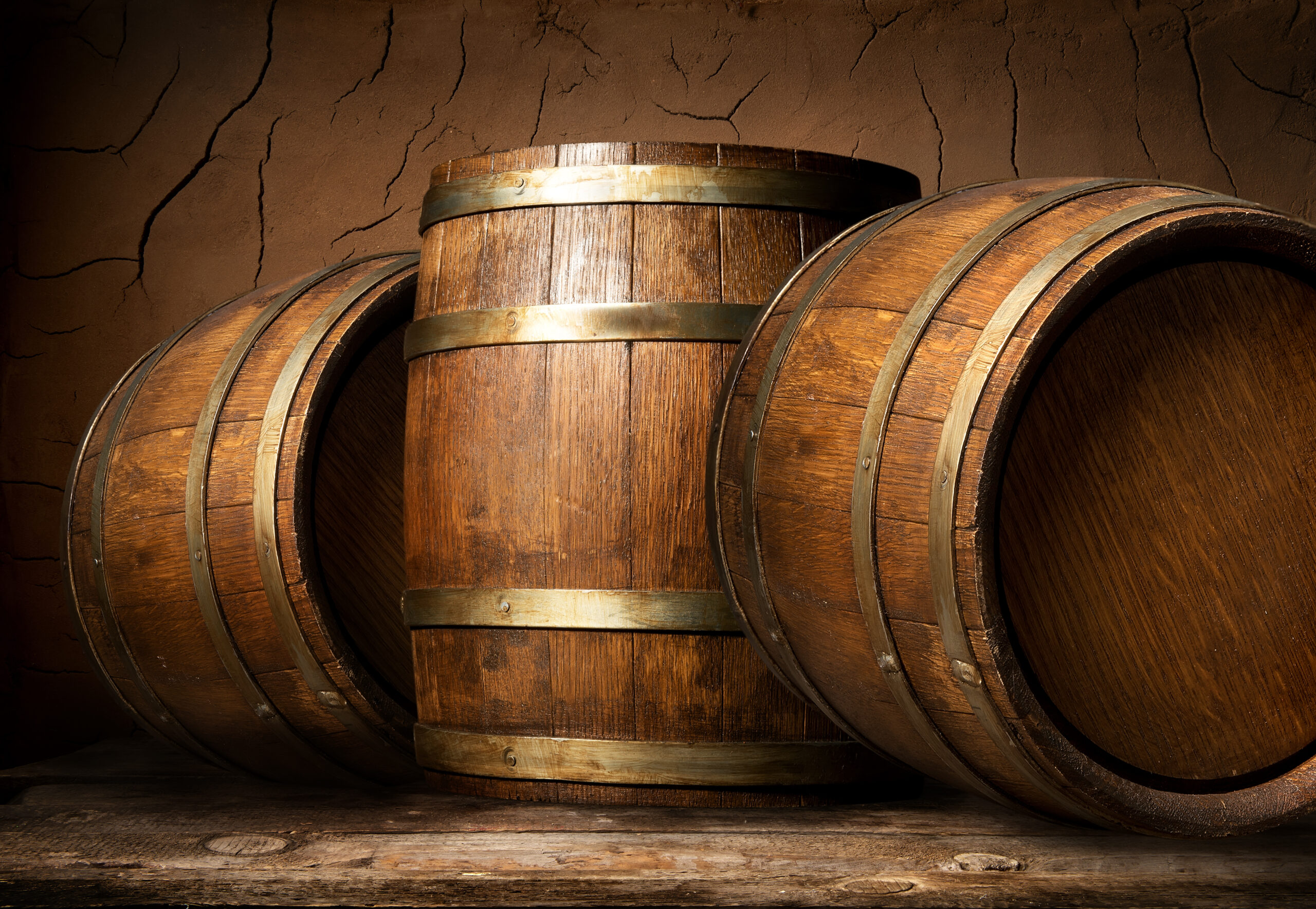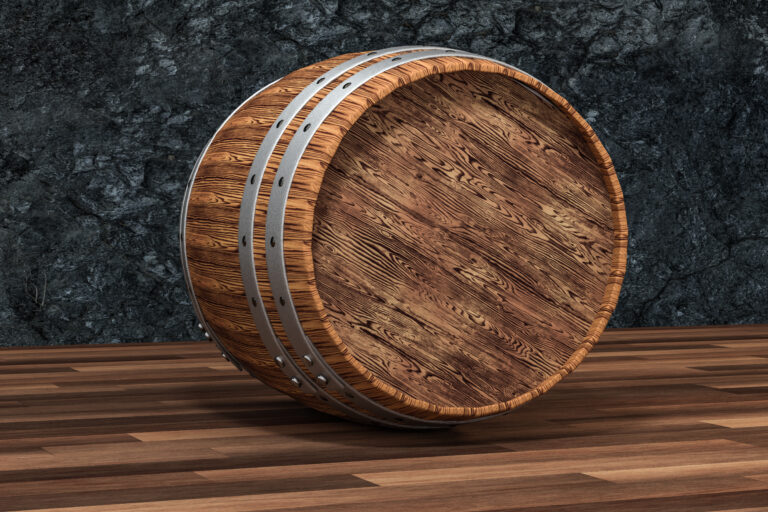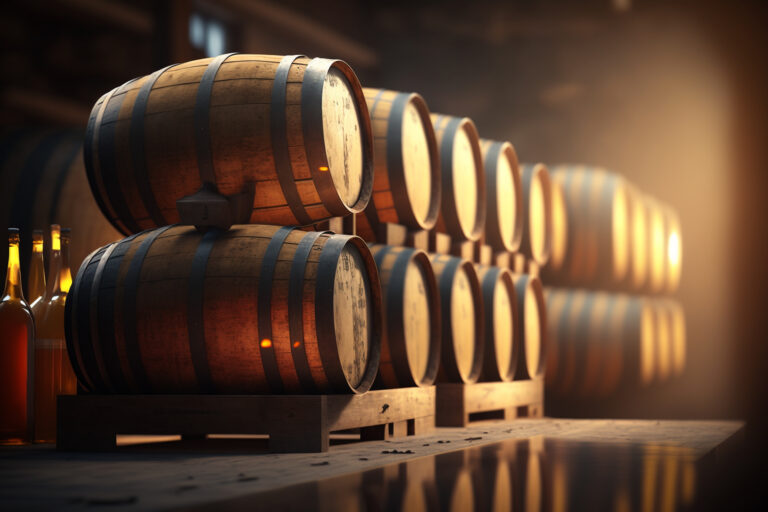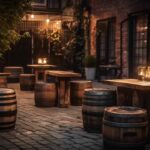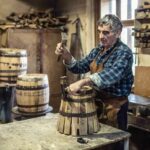You probably think you know how whiskey gets its rich flavor and gorgeous amber color, right? Well, think again. The real secret hides within the barrels, painstakingly handcrafted by master coopers using age-old techniques passed down through generations. These amazing barrels are the unsung heroes, shaping every nuance of the whiskey’s taste, aroma, and hue as it patiently ages. But here’s the kicker: the ancient craft of the cooper is slowly fading, with only a handful of these artisans left in places like Scotland and Kentucky.
These master coopers dedicate years, sometimes even a lifetime, to perfecting their art. They meticulously select and shape the oak wood, toast the barrels, and then assemble them by hand with nothing more than simple tools like hammers and fire. Every choice matters: the specific type of wood, the level of toasting, and even the barrel’s size and shape all play a huge role in how the whiskey transforms during maturation. After resting for at least two years – and sometimes up to 50 years or even longer – the whiskey develops those signature notes of caramel, vanilla, and spice, all thanks to the magical interaction with these wooden vessels.
Honestly, without master coopers, the whiskey we cherish today simply wouldn’t exist. Their time-honored skills and deep knowledge are what magically turn raw distilled spirits into that coveted amber gold. The coopers’ secrets have been guarded for centuries, but with so few left, the very future of traditional barrel-aged whiskey is hanging in the balance. Come with us as we dive into the hidden world of these master coopers and uncover the fascinating secrets behind how they craft the perfect whiskey barrel.
Introduction to Master Coopers and Barrel Making
To truly craft a whiskey barrel, you need wood, heat, water, and time. But, more than anything, you need the steady hands and sharp eye of a master cooper. These barrel makers are a rare breed, inheriting skills that seamlessly blend true artistry with incredible technical precision, often passed down through generations of their families.
Coopers are experts at sourcing and shaping oak staves that will eventually become barrels. White oak is particularly prized for its ability to impart delightful vanilla, caramel, and spice flavors. These staves are meticulously shaped and “tuned,” with grooves and notches cut to an astonishing accuracy of 1/1000th of an inch.
Next, the staves are carefully heated, making them pliable as the wood’s fibers gently break down. Strong steel bands then hold these pliable staves together as the barrel slowly takes its iconic form. Once shaped, the barrel is toasted to caramelize the wood’s natural sugars, followed by a crucial step: charring the inside.
Charring the barrel is absolutely vital. As the inner oak is exposed to fire, it creates a layer of active charcoal that acts as a natural filter, mellowing the spirit and adding depth. The level of char directly influences the desired flavors – lighter chars tend to accentuate those classic oak and vanilla notes, while darker chars impart richer clove and espresso characteristics.
Finally, the newly charred barrel is filled with water to make the wood swell and create a perfect seal before being emptied and filled with the new spirit. As the whiskey matures, the wood’s pores naturally expand and contract with temperature changes, infusing flavor notes that are surprisingly influenced by the local climate. And don’t forget the angel’s share – the portion of whiskey that mysteriously evaporates during aging, further concentrating those delicious flavors.
After years of patient maturation, the sheer brilliance of the master cooper’s craft shines through in the whiskey’s incredible aromas and taste. Their skills and the undeniable quality of their barrels are absolutely instrumental in shaping the unique characteristics of some of the world’s most prized spirits. Truly, the cooper’s role is the very first, foundational step on any whiskey’s remarkable journey to becoming a fine, aged spirit.
Selecting the Best Wood for Whiskey Barrels
When it comes to crafting whiskey barrels, selecting just the right wood is paramount. Master coopers instinctively know that the wood itself is a living ingredient, actively imparting essential flavor and aroma compounds to the aging spirit.
American White Oak
For whiskey barrels, American white oak is widely considered the gold standard. Its tight grain and incredible ability to impart delightful vanilla and coconut flavors make it perfectly ideal. The oak planks are carefully cut into staves, then meticulously seasoned for at least 24 months. This natural drying process is crucial as it significantly reduces harsh tannins and other undesirable compounds in the wood, making it perfect for whiskey aging.
The oak sourced from specific forests in the central U.S., particularly from states like Missouri, Kentucky, and Tennessee, is highly prized for its consistent quality and superior flavor profile, making it a top choice for whiskey maturation.
The wood is typically quartersawn into staves, which increases the surface area exposed to the whiskey, allowing for maximum flavor interaction during aging.
Charring the Barrels
Before being filled with spirit, the inside of each barrel undergoes a meticulous charring process using controlled fire. This charring doesn’t just caramelize the wood sugars; it also creates a vital layer of charcoal that acts as a natural filter, mellowing the spirit and adding depth. Barrels are usually charred from #1 (light toast) to #4 (alligator char). The heavier the char, the more profound the barrel’s influence on the whiskey’s flavor profile.
By starting with the highest quality wood and charring each barrel to perfection, master coopers craft bespoke vessels that are absolutely ideal for aging fine whiskeys. Their time-honored techniques, combined with top-tier ingredients, are precisely what give certain whiskeys their distinctive and unforgettable characteristics. For true whiskey lovers, that’s certainly something worth raising a glass to!
The Art of Fire Bending Oak for Whiskey Barrels
To create those iconic whiskey barrels, coopers perform a mesmerizing dance with fire, heating and bending oak staves into the familiar curved shape. This technique, known as “fire bending,” demands incredible skill, vast experience, and an almost intuitive understanding of how wood and flame interact.
Selecting the Wood
Coopers meticulously choose oak, especially American white oak, for its ideal density, grain, and remarkable ability to infuse flavor into the whiskey. The oak must be properly seasoned, or air-dried, for at least two years before it can even be worked. Trying to bend wet wood would be a disaster—it simply won’t cooperate and can easily warp or crack when heated.
Preparing the Staves
Before the fire bending begins, coopers carefully plane each stave to a uniform thickness and width. This precision is non-negotiable; every stave must fit together perfectly to form a genuinely watertight barrel, crucial for successful whiskey aging.
The Art of Fire Bending
Coopers skillfully build a sizable fire using kindling and logs, then carefully position the oak staves over the dancing flames. As the wood slowly heats, it becomes wonderfully pliable. With practiced hands, coopers gently bend each stave using sturdy wooden trusses and straps, coaxing them into that familiar bowed shape that defines a whiskey barrel.
Judging the Bend
An experienced cooper possesses an almost uncanny sense for exactly how much heat and bending each stave requires. This instinct comes from years of working with different wood types, thicknesses, and desired barrel shapes. Bend the staves too little, and they won’t form a perfect circle; bend them too much, and they’ll scorch or even break. Coopers develop an incredible intuition for how the wood responds to the heat, a skill honed through countless hours of practice, ensuring optimal whiskey maturation.
Temporary Assembly
Once bent, the staves are temporarily assembled into barrel halves using metal rings. As the wood cools, it retains its new, curved shape. These temporary rings are then removed, allowing the staves to be meticulously sanded and fitted into their permanent barrel halves.
The ancient craft of barrel making requires a profound knowledge of wood and fire, taking coopers years to truly master. But when performed with such precision, the results are whiskey barrels that can last for decades, imparting distinctive flavors to some of the world’s finest spirits. The true secret to these masters’ craft lies in the perfect, harmonious marriage of oak and flame.
Precise Cutting and Shaping of Whiskey Barrel Staves
As a master cooper, cutting and shaping the staves with utmost precision is absolutely essential for creating a high-quality whiskey barrel. Each and every stave must be cut to incredibly exact specifications so they fit together flawlessly, forming a genuinely watertight vessel for whiskey aging.
The staves begin their journey as raw oak boards that are cut to length. Then, the cooper uses a jointer to meticulously shape one edge of each board, ensuring they can stand up evenly together. Next, these staves are put through a thickness planer to achieve uniform width and thickness, critical for a tight fit.
Once cut and planed, the staves must be shaped into that familiar, bulging barrel form. The cooper skillfully uses a rounding jack and a flagging iron to curve the edges of each stave. Then, a doweling jig comes into play, used to cut precise grooves in the staves, allowing them to be securely fastened together with strong wood dowels.
The shaping of the barrel head pieces is equally meticulous. These head pieces are cut as perfect circles, and a rounding jack gives them a convex shape, ensuring they fit snugly inside the barrel opening. Notches are then cut into the edges of the head pieces, allowing wood dowels to fasten them securely to the barrel staves.
When all staves and head pieces are precisely cut and shaped, the barrel is finally ready for assembly. The staves are stood on end, and metal hoops are carefully fitted around them to hold everything in place as wood dowels are hammered in to fasten the staves together. The head pieces are then attached, forming the top and bottom of the barrel.
Precision cutting and shaping are absolute hallmarks of a master cooper’s craft. When executed properly, the staves and head pieces fit so snugly together that they create a barrel that simply won’t leak and will last for decades, perfect for whiskey maturation. The immense time and incredible skill required to produce a single whiskey barrel clearly demonstrate why these artisans are so highly regarded. Their meticulous work is truly instrumental in aging fine whiskeys and other spirits.
Assembling the Barrel – It’s All About the Angle
The true secret to a watertight whiskey barrel lies in the ingenious way the staves are fitted together. Master coopers understand that it’s entirely about achieving that perfect angle. They utilize specialized tools like jointer planes, chamfer knives, and croze cutters to precisely shape each stave so they lock together with incredible snugness, a critical factor for successful whiskey aging.
Preparing the Staves
The staves begin as plain oak boards that are cut to size. The coopers then plane them to gradually taper the sides, making them slightly wider in the middle. Next, they use a jointer plane to meticulously shave and smooth the inner surface of each stave to the exact curvature. This curve, famously known as the bilge, is what allows the barrel to swell gracefully in the middle, enhancing the whiskey maturation process.
Cutting the Croze Groove
The croze is that crucial groove that securely holds the barrel heads in place. Coopers cut this groove using a specialized croze cutting tool. They carefully shave out a groove about 3/4 of the way through the stave, intentionally leaving the outer 1/4 inch intact. This thin section of wood will eventually bend, forming an airtight seal with the barrel head, preventing any leaks during whiskey aging.
Chamfering and Beveling
Chamfering and beveling the staves are key to getting them to fit together so snugly. Coopers use chamfer knives and planes to shave the edges of the staves at a precise angle, ensuring they join together with a tight, wedge-like shape. The bevel cleverly allows the staves to swell slightly when in contact with whiskey, naturally sealing any tiny gaps and maintaining the barrel’s integrity for aging.
Raising the Barrel
Finally, the staves are assembled into their barrel shape using metal hoops. The coopers gradually hammer the hoops down, expertly squeezing the staves into that perfect curve. They meticulously check for any leaks using the “bunghole”—the opening where the stopper will eventually go. Once deemed absolutely watertight, the barrel heads are precisely fitted into the croze grooves.
The craft of the cooper relies profoundly on precision, patience, and an unparalleled eye for the intricate angles and curves that define a perfect whiskey barrel. When done right, these barrels can last for decades, continuously mellowing and enhancing the flavor of the whiskey stored inside. The true secret to a master cooper’s work is really no secret at all—just good old-fashioned skill, tireless dedication, and invaluable experience, all contributing to exceptional whiskey aging.
Toasting the Barrel – A Delicate Process
Toasting the barrel is undoubtedly one of the most critical steps in crafting a premium whiskey. The very level of toasting can either make or break the final flavor of the spirit. As a master cooper, this particular step demands an incredibly expert touch and keen, honed senses, influencing the overall whiskey maturation.
Gentle Heating
The staves are slowly and gently heated over an open fire. As the wood gradually warms, the lignin softens, coaxing out subtle, wonderfully complex flavors. The cooper vigilantly monitors the fire and stave temperature. Too much heat can unfortunately produce unpleasant burnt notes, while too little won’t sufficiently enhance the wood flavors for optimal whiskey aging.
The Sweet Spot
There’s a mystical “sweet spot” – that ideal temperature range where the wood magically develops those coveted notes of vanilla, caramel, and toasted nuts. The cooper uses every one of their senses, especially smell, to determine precisely when the staves hit that perfect moment of aromatic perfection. Years of experience have honed their ability to identify this sweet spot through scent alone, a skill vital for whiskey flavor development.
Quick Assembly
Once perfectly toasted, the staves must be assembled quickly while they are still pliable. The metal hoops are swiftly put in place to hold the staves together as the wood cools and hardens. If too much time passes, the wood becomes rigid, preventing an airtight seal, which is crucial for proper whiskey aging and preventing leaks. The cooper’s skill and speed are absolutely essential for success.
Sealing the Deal
When completely cooled, the barrel can be thoroughly tested for leaks using water. Any small gaps are meticulously sealed with a paste made from the wood shavings and water. Once a tight seal is achieved, the barrel is officially ready for filling. The distiller’s spirit will now interact intimately with the wood, extracting the complex flavors meticulously built in during the toasting process, creating a truly exceptional aged whiskey.
The subtle art of barrel toasting is a time-honored craft passed down through generations. Modern technology, for all its advances, simply cannot replicate the skill and passion infused into each barrel by a master cooper. Their deep knowledge and extensive experience transform humble wood and fire into true liquid gold. The toast is undoubtedly the very first, foundational step on a whiskey’s remarkable journey to achieving exceptional flavor.
Testing for Leaks – The Cooper’s Special Methods
To properly test barrels for leaks, coopers employ time-honored methods, secret techniques passed down through generations. As a cooper, detecting leaks early on is absolutely crucial to producing high-quality barrels, directly impacting the quality of the aged whiskey.
Hammering the Barrel
Using a specialized mallet, coopers will gently hammer the outside of the barrel, listening intently for any subtle change in tone that might indicate a weak spot. The cooper taps the barrel, listening for dull or hollow sounds that signify a leak. Skilled coopers can detect even the smallest leaks this way, thanks to their incredibly trained ears.
Rolling the Barrel
Coopers will also roll the barrel along the floor, sloshing the water inside. As the water moves, the cooper listens for any tell-tale dripping or splashing sounds. The rolling motion cleverly helps the water find any hidden cracks or holes. The cooper may roll the barrel in different directions to meticulously test all sides, ensuring no leak goes unnoticed, crucial for whiskey maturation.
Filling and Draining
Another time-tested method involves filling the barrel with water and letting it sit for several hours or even days. The cooper then drains the water and refills, carefully checking for any changes in the water level that indicate a leak. As water seeps out, the new water added will naturally be less. An experienced cooper knows precisely how much evaporation to expect and can spot a leak right away, protecting the precious whiskey inside.
Using a Light Source
For a final, meticulous check, coopers may use a bright light, like a flashlight. They shine the light directly into and all around the inside of the barrel, looking for any tell-tale beams of light passing through. Even very small leaks or cracks will allow some light to penetrate, so this method demands a keen, incredibly discerning eye, ensuring the barrel is perfectly sealed for whiskey aging.
Master coopers have spent many years honing their craft and developing an almost intuitive sense for finding leaks. Their practiced methods consistently result in high-quality barrels that, in turn, produce superior spirits. The true secret to their success lies in their unwavering attention to the smallest details and an uncompromising dedication to excellence in every single whiskey barrel they craft.
Branding and Customizing Barrels
Once barrels have been expertly crafted, master coopers employ specialized techniques to customize and brand them for individual distilleries, adding a unique signature to each vessel destined for whiskey aging.
Charring
Charring the inside of barrels is more than just a technique; it’s an art that profoundly adds flavor to the whiskey. Master coopers meticulously control the charring process. They carefully light a fire within the barrel and extinguish it at the precise moment to achieve the distillery’s desired char level. The charred wood then wonderfully imparts notes of vanilla, caramel, and smoke to the aging whiskey, a crucial step in whiskey maturation.
Branding
Distilleries distinctly brand their barrels to identify them, and master coopers are true experts at this. They skillfully hand-brand barrels by burning specific markings into the wood with intensely heated irons. They brand barrel ends, staves, and even barrel heads. These brands often incorporate the distillery name, logo, and other symbolic elements. Barrel branding is truly an art form that master coopers have honed through countless years of dedicated practice.
Bung Holes
Master coopers drill precisely sized bung holes in each barrel for effortless filling and emptying. They meticulously taper the holes so bungs can be hammered in snugly, creating a perfect, air-tight seal that is crucial for whiskey aging. Bung hole placement is key, as the bung must be easily accessible during filling and emptying, yet secure enough not to leak precious whiskey during its long maturation journey.
Additional Modifications
Distilleries frequently request additional modifications to perfectly suit their unique needs. These can include re-charring used barrels, installing spirit safes or other sophisticated sampling devices, and even cutting extra bung holes. Master coopers are highly skilled at safely and attractively modifying barrels to exact customer specifications, ensuring optimal conditions for whiskey aging.
The incredible skills and artistry of master coopers are absolutely essential to crafting barrels that truly transform raw distillates into magnificent aged spirits. Their mastery of techniques like charring, branding, bung holes, and other barrel modifications produces customized barrels that are directly responsible for shaping the distinctive flavors of fine whiskeys. The rich aromas and exquisite tastes whiskey acquires during maturation are an undeniable testament to the cooper’s timeless craft.
The Secrets of Master Coopers in Whiskey Barrel Making FAQs
Master coopers, or barrel makers, have been perfecting their craft for centuries. Their trade secrets, deeply rooted in tradition, have been carefully passed down through generations. Here are some of the most frequently asked questions about how master coopers meticulously craft whiskey barrels:
What type of wood do coopers use? Coopers primarily use oak, specifically American white oak or European oak. Oak wood is ideal for aging spirits because it’s porous enough to allow subtle oxygen exchange (which helps the spirit breathe and mellow), yet incredibly strong enough to securely hold liquid without leaking. Critically, the oak also directly imparts wonderful flavor to the spirit during maturation.
How are the staves shaped? The staves, or individual planks of wood, are skillfully shaped into curved pieces that fit together perfectly to form a barrel. Coopers use a precise combination of heat and steam to gently bend the staves without cracking them. They meticulously trim and plane each stave to ensure an exact fit, crucial for a watertight whiskey barrel.
How are the barrels constructed? The staves are first assembled into the barrel form and temporarily held together with metal rings. These temporary rings are then replaced with permanent metal hoops. Holes are carefully drilled into the staves, and the hoops are precisely passed through and hammered into place to securely hold the staves together, creating a robust vessel for whiskey aging.
How long does it take to make a barrel? An experienced cooper can craft a single barrel in about 6 hours of focused work. However, the wood itself needs to be meticulously cured for weeks or even months before it can even be made into a barrel. And the barrel must then be toasted and charred, which can take several more hours. So, from start to finish, a single whiskey barrel can take anywhere from 4 to 6 weeks to complete, a testament to the dedication in whiskey maturation.
How are barrels toasted and charred? Barrels are toasted by carefully exposing the inside to a controlled flame, which beautifully caramelizes the wood sugars. Barrels are then charred by burning the inside further, creating that crucial charcoal layer. The level of toast and char depends entirely on the spirit that will be aged in the barrel and the desired flavor profile for the final whiskey. The toast and char are what impart those distinctive aromas and flavors like vanilla, caramel, and spice, fundamental to whiskey aging.
Master coopers continue to uphold time-honored traditions and invaluable skills to craft bespoke barrels that truly shape the taste of aged whiskeys. Their trade secrets may be centuries old, but the remarkable results are timeless, contributing to the enduring legacy of whiskey maturation.
Final Thoughts
So there you have it – a genuine peek behind the scenes into the ancient, yet utterly fascinating, craft of barrel making and the incredible master coopers who have dedicated their lives to honing their skills. The next time you take a leisurely sip of your favorite aged spirit, take a moment. Raise your glass to these coopers and the beautiful oak barrels that are solely responsible for giving your whiskey its distinctive color, captivating aroma, and unforgettable taste. Their work, a perfect blend of art and science, wood and metal, is truly intoxicating. Barrel by barrel, these humble yet exceptionally skilled craftsmen continue an unbroken chain of knowledge and handiwork dating back centuries, ensuring the legacy of whiskey aging. Not everything in our modern world moves at breakneck speed. Some of the finest things in life still demand time, patience, and the touch of human hands. And that, my friends, is absolutely worth savoring.
